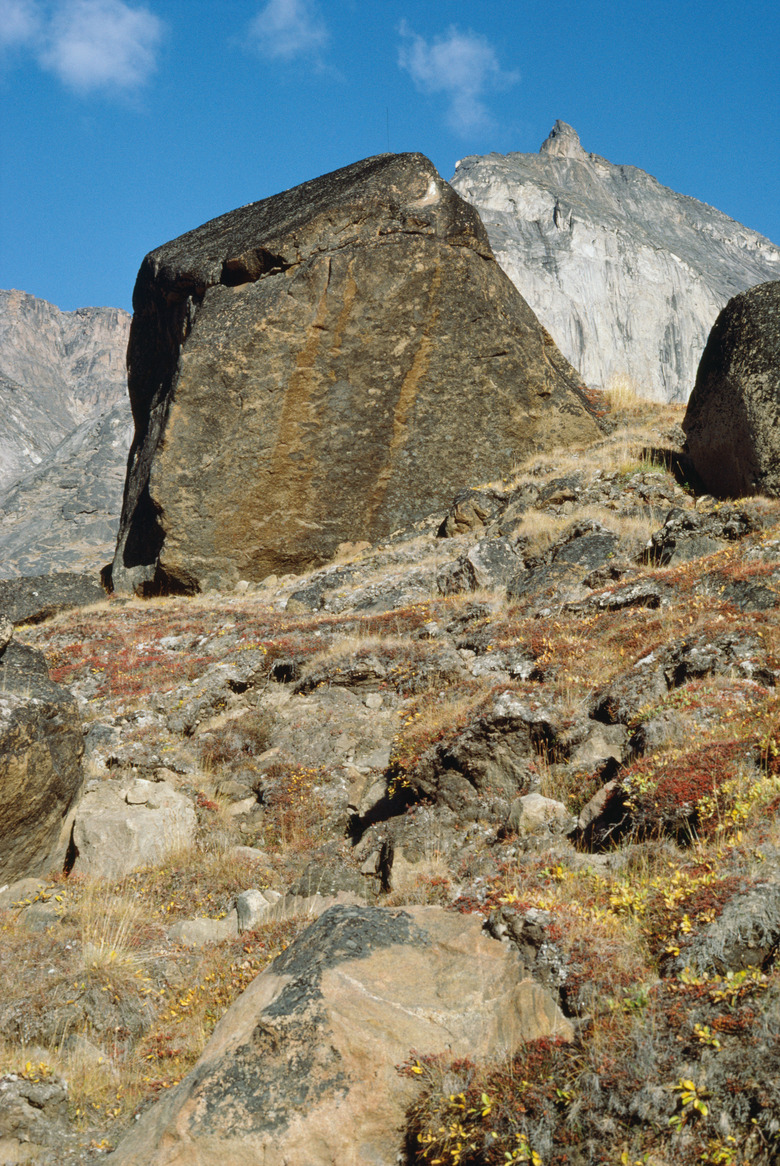Definition Of Chemical Weathering
Granite, limestone and other types of rock may appear virtually indestructible, but even these heavy-duty materials are no match for Mother Nature. Air and water in the atmosphere interact with minerals in rocks, resulting in a chemical reaction that weakens the rock and leaves it vulnerable to wear and erosion. Of course, rocks aren't the only victims of chemical weathering; this phenomenon also affects other substances, from the copper and other metals to man-made materials.
Chemical weathering includes any type of weathering that changes the molecular makeup of rock and other structures. These changes occur thanks to chemical reactions between minerals in the rock and the air, water or other elements that interact with the rock. Carbonation, where carbon dioxide in the air reacts with water in the rock, represents a simple example of chemical weathering. This process creates a substance called carbonic acid, which dissolves and weakens the material.
Oxidation, where oxygen and minerals combine to form new materials, serves as another basic type of chemical weathering. Oxygen reacting with iron in rock creates iron oxides, which can lead to rust-colored streaks on the surface of the rock.
Physical Weathering
Physical Weathering
Both physical and chemical weathering work to break down and weaken rocks, but the two processes work very differently. Unlike chemical weathering, physical weathering doesn't change the chemical makeup of the rocks. Instead, it includes processes that physically or mechanically break down rock. This may include cracks caused by freezing and thawing cycles, breaks created by plant roots that grow through the rock, or abrasion from blowing sand or rock particles.
Weathering Vs. Erosion
Weathering Vs. Erosion
Many people confuse weathering with erosion, yet these terms refer to two very different concepts. Weathering, whether physical or chemical, loosens or weakens rock particles, leaving them free for erosion to carry them away. Erosion takes place thanks to moving air, water or ice. For example, melting snow on top of a mountain could erode the face of a mountain that has already been weakened by chemical weathering.
Effects of Chemical Weathering
Effects of Chemical Weathering
Chemical weathering produces both positive and negative effects. This process helped to create some of the most beautiful spots on Earth, including the Grand Canyon, China's Stone Forest and Carlsbad Caverns National Park. Chemical weathering also contributes to soil formation, as the particles within soil are derived from rock that has been broken down over time.
Unfortunately, this process also damages property, including homes and businesses. Chemical weathering can create rusty holes in the walls of a metal shed or wear away the thoughtful inscription on a headstone. It can even damage great monuments and statues. For example, the green patina on the Statue of Liberty is a direct result of chemical weathering to copper. New Hampshire's famous "Old Man in the Mountain," which was created over centuries thanks to the effects of weathering, was itself a victim of chemical weathering that destroyed the structure in 2003.
Cite This Article
MLA
Beach, Emily. "Definition Of Chemical Weathering" sciencing.com, https://www.sciencing.com/definition-chemical-weathering-4757/. 24 April 2017.
APA
Beach, Emily. (2017, April 24). Definition Of Chemical Weathering. sciencing.com. Retrieved from https://www.sciencing.com/definition-chemical-weathering-4757/
Chicago
Beach, Emily. Definition Of Chemical Weathering last modified August 30, 2022. https://www.sciencing.com/definition-chemical-weathering-4757/
